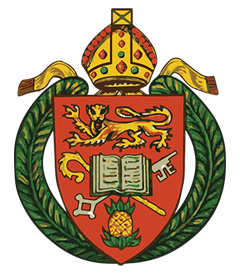From The Rt. Rev. Dr. Howard Gregory
 The resurrection of Jesus Christ which Christians celebrate at Easter has always baffled human minds. It should not surprise us then that around this time each year there is, among non-believers, some sensational publication or television presentations which have as their goal some kind of argument or supposed proof that the resurrection of Jesus did not take place and is a myth which Christians have fabricated. Here in Jamaica, Easter is not being denied by carefully articulated arguments but by a shifting of focus to Carnival and the Bacchanal among sections of the population. Nevertheless, the story of the resurrected Christ will never be thwarted.
The resurrection of Jesus Christ which Christians celebrate at Easter has always baffled human minds. It should not surprise us then that around this time each year there is, among non-believers, some sensational publication or television presentations which have as their goal some kind of argument or supposed proof that the resurrection of Jesus did not take place and is a myth which Christians have fabricated. Here in Jamaica, Easter is not being denied by carefully articulated arguments but by a shifting of focus to Carnival and the Bacchanal among sections of the population. Nevertheless, the story of the resurrected Christ will never be thwarted.
St John’s account of the resurrection of Jesus identifies Mary Magdalene as the person who first encountered the risen Christ. There are many perspectives on the identity of this person as she is portrayed in different ways across the gospels and identified with various characters encountered in the New Testament, not the least being the woman from whom Jesus had cast out seven demons, to the woman of ill-repute who had crashed the dinner party and anointed Jesus’ feet with perfume and her hair.
According to John, it is Mary who first goes to the tomb on that Easter morning and discovers that the body of Jesus is missing. With this discovery she runs to share the news with Peter and the other disciples. Two disciples set out for the tomb, one of whom is Peter and the identity of the other is not revealed. Peter goes into the tomb and is able to verify the facts as told by Mary. Peter, in typical masculine fashion, has simply noted the facts. Mary, on the other hand, is distraught and shows her emotions.
Mary stands by the tomb weeping in distress. Within a matter of three days she has seen much which has led up to the death of the one who had brought transformation to her life and for whom she no doubt felt a tremendous sense of gratitude and love. She had witnessed the violence inflicted by the conspiracy of the duly constituted authority of the state and the religious leadership of the day in the condemnation of Jesus to death by crucifixion as a common criminal. The Jewish leaders had agitated the crowd into a riot, had falsely accused Jesus, and got the Roman ruler, Pontius Pilate, to condemn Jesus by execution. As far as they were concerned, Jesus had attacked their temple, their sacrifices, and their places of privileged authority. It was now finished. The job was done. Jesus and the Jesus movement were dead. Perhaps, they celebrated among themselves saying “we got rid of that trouble-maker.”
As her tears flowed, she looked into the tomb and had an experience of two angels sitting where the body of Jesus had rested. Taking note of her distress, they asked her, “Woman, why are you weeping?” She responds in a way underscoring the compounding distress which she was experiencing as if the indignity of the death of Jesus were not enough, “They have taken away my Lord, and I do not know where they have laid him.” At that very moment, she turned around and saw the risen Jesus, but did not recognize him, and he also acknowledged her distress by asking the same question as the angels, “Woman, why are you weeping? And added, “Whom are you looking for?”
As we observe another Easter in Jamaica, I believe that the experience of Mary in distress and the question asked of her is reflective of the experience of many who weep because of the violence and criminal activity which have been unleashed on members of our society. Mothers are weeping for their children whose lives have been snuffed out, as are wives, sisters and daughters. But so are the males who may not be able or willing to acknowledge their distress.
Unlike the perpetrators of the violence against Jesus, ours is not just the outcome of the conspiracy of state and religious authorities, but criminal elements driven by greed, materialism, and a proclivity to violence as the way to resolve differences. Not so obvious are those who are complicit in criminal activity and the resultant violence and death by adhering to a value system which supports such antisocial activities, as is the case with the lotto scam. Many there are who weep for other reasons.
Mary Magdalene experiences a transformation as the risen Jesus affirms her by calling her by her name, pointing to his own transformation and triumph over death and the grave.
Many of us come to this Easter weeping for one reason or another, something which is true, not only for us as Jamaicans, but across the world from the images which are beamed across our televisions on a daily basis. Mary Magdalene’s transformation began, not at the graveside, but in her first encounter with the human Jesus; and found its profound confirmation and fulfillment at the empty tomb. For those who weep this Easter there is the invitation to encounter Jesus through the witness of his life and ministry, perhaps in the process hearing him calling us by name, but also in his victory over the violence of crucifixion, the violence of systems, and the finality of death.
I close with some words from the biblical scholar Walter Brueggemann: The resurrection of Jesus is the ultimate energizing for the new future. The wrenching of Friday had left only the despair of Saturday (Luke 24:21) and there was no reason to expect Sunday after that Friday. There is not any way to explain the resurrection out of the previously existing reality. The resurrection can only be received and affirmed and celebrated as the new action of God whose province it is to create new futures for people and to let them be amazed in the midst of despair.


